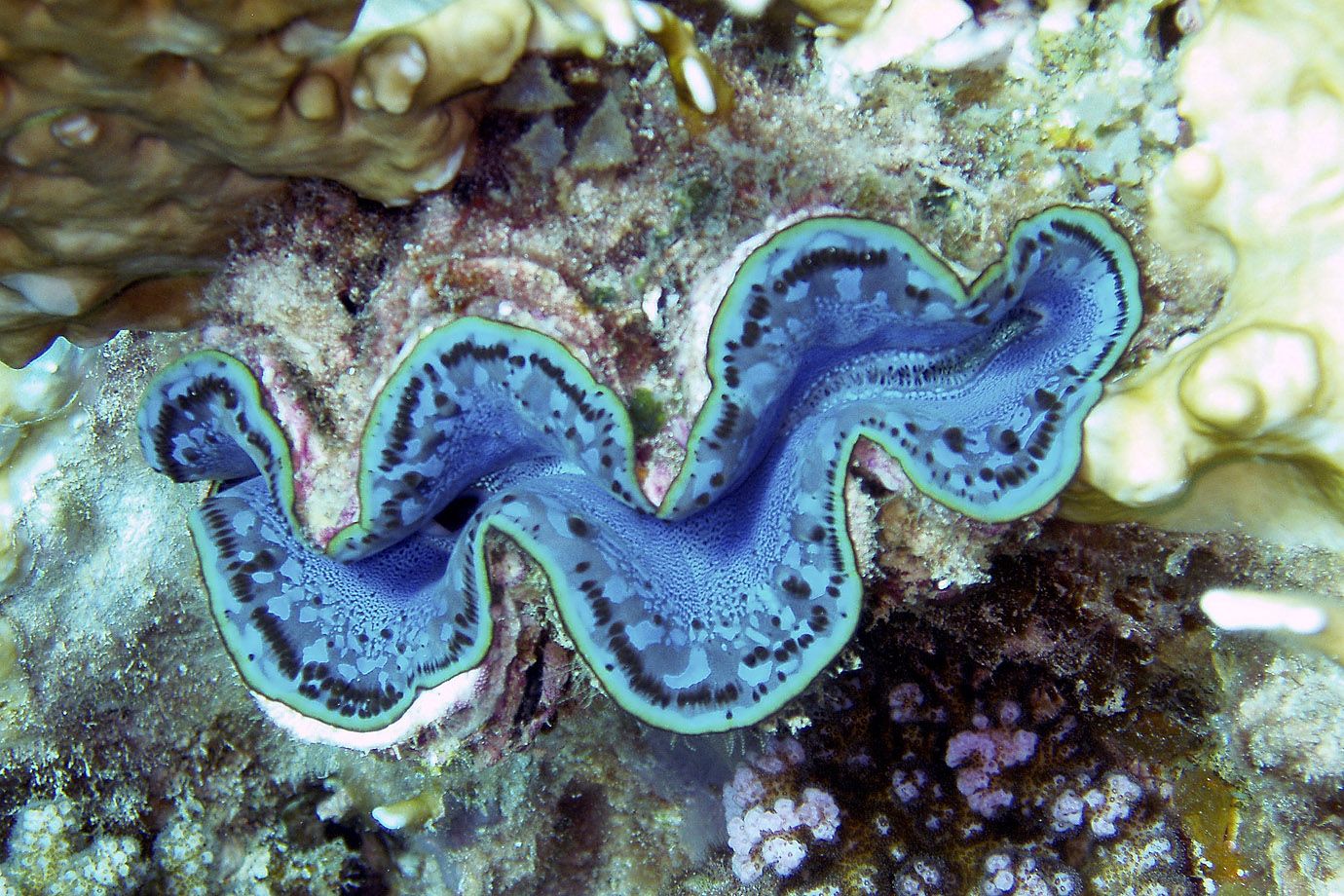
Giant Clam
The Giant Clam is the largest living bivalve mollusc. It is one of the most endangered clam species. One of a number of large clam species native to the shallow coral reefs of the South Pacific and Indian oceans, they can weigh more than 200 kilograms, measure as much as 120 centimeters across, and have an average lifespan in the wild of 100 years or more.
They are also found off the shores of the Philippines, where they are called taklobo. The Giant Clam lives in flat coral sand or broken coral and can be found at depth of as much as 20 m. Its range covers the Indo-Pacific, but populations are diminishing quickly and the Giant Clam has become extinct in many areas where it was once common. Itt can be found in high- or low-islands, lagoons, or fringing reefs. Its rapid growth rate is likely due to its ability to cultivate plants in its body tissue.
Although larval clams are planktonic, they become sessile in adulthood. The creature's mantle tissues act as a habitat for the symbiotic single-celled dinoflagellate algae (zooxanthellae) from which it gets nutrition. By day, the clam opens its shell and extends its mantle tissue so that the algae receive the sunlight they need to photosynthesize.
Source: en.wikipedia.org/wiki/Giant_clam - 29.09.2010
Giant Clam
The name „Giant Clam“ is really able: the largest species of this genus can reach a weight up to half a ton.







